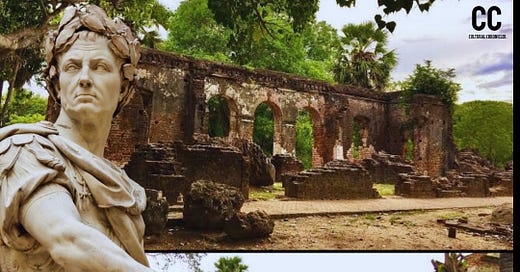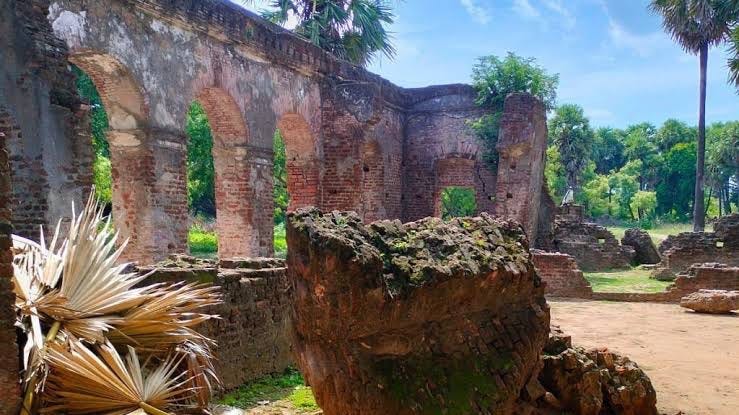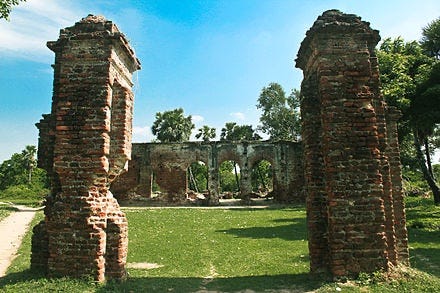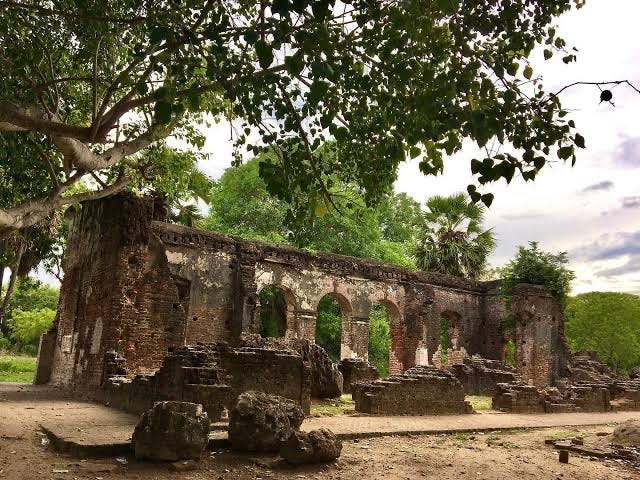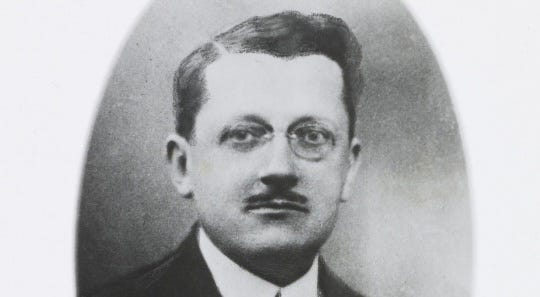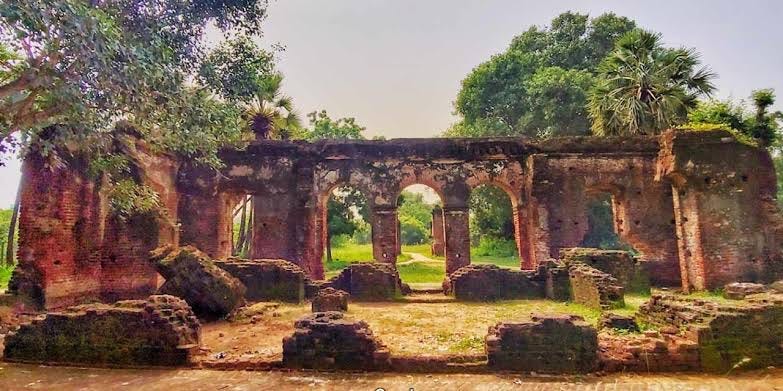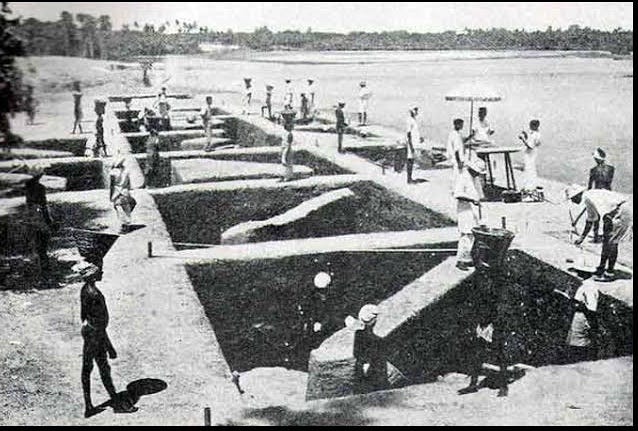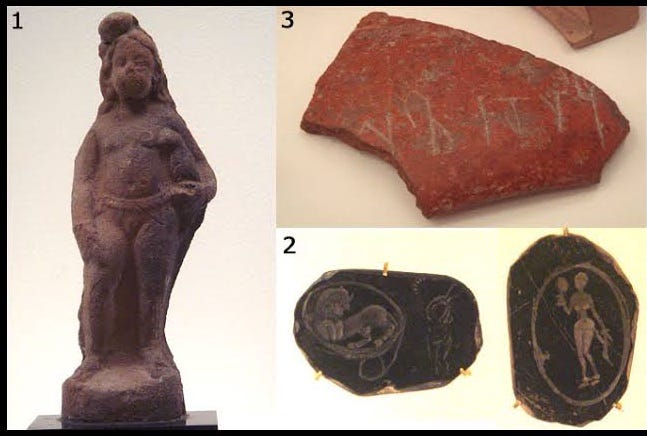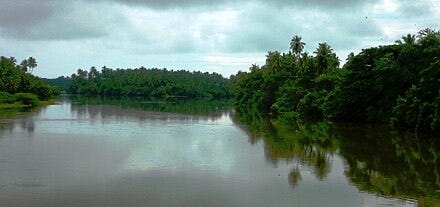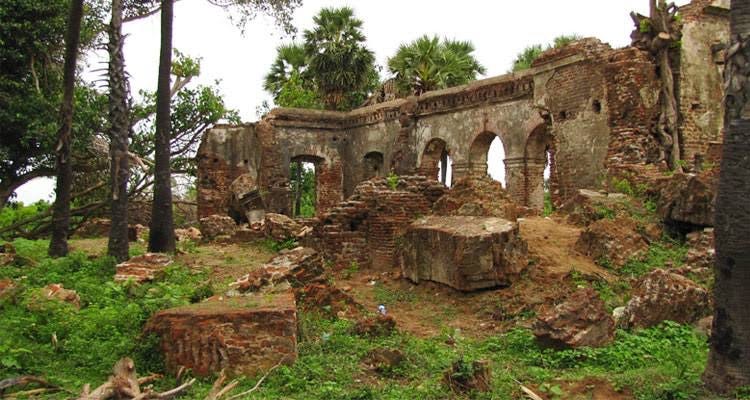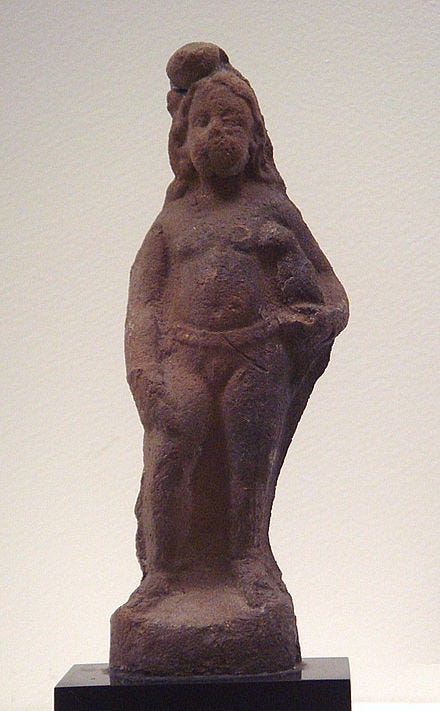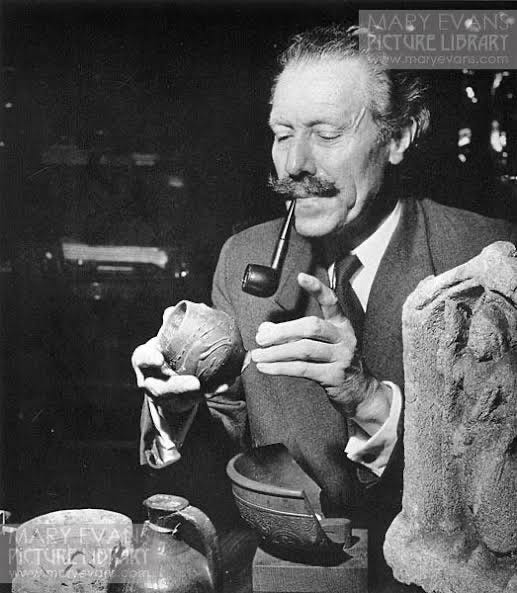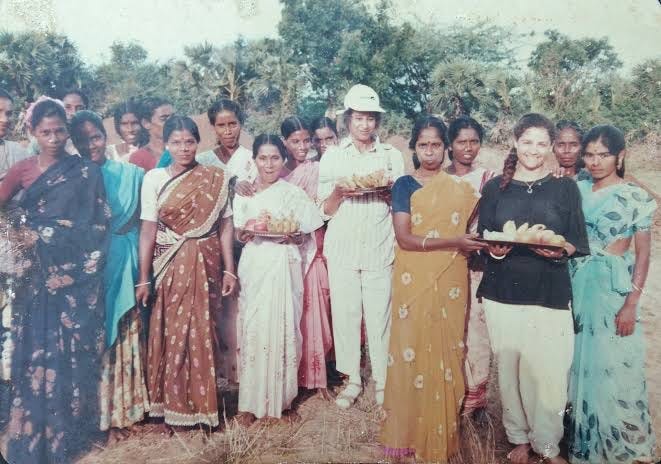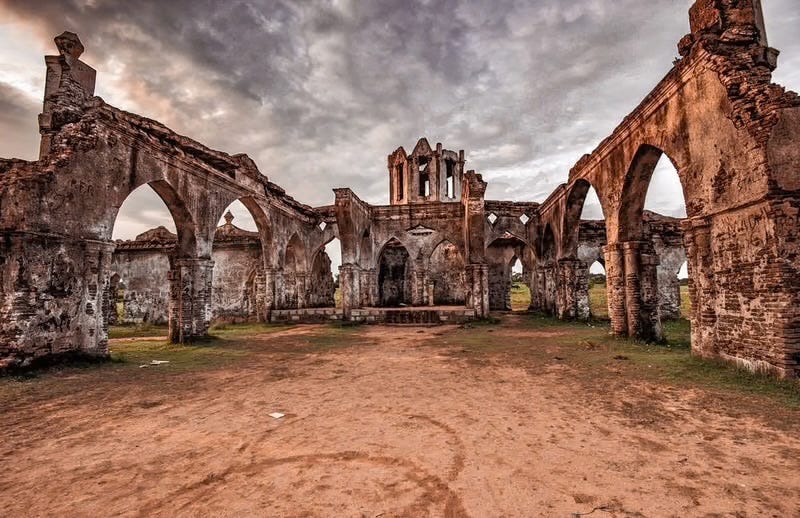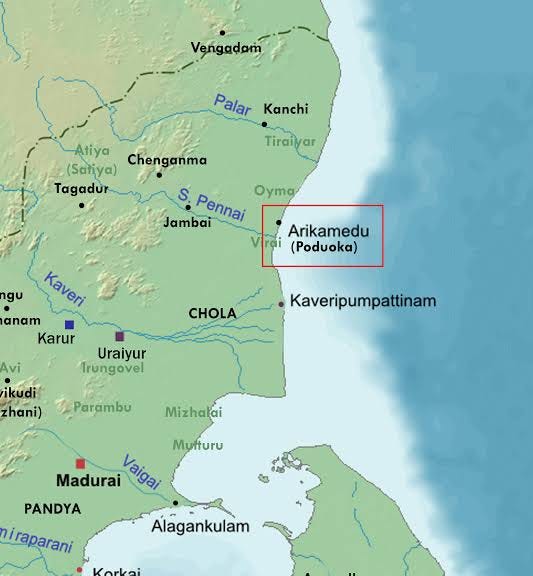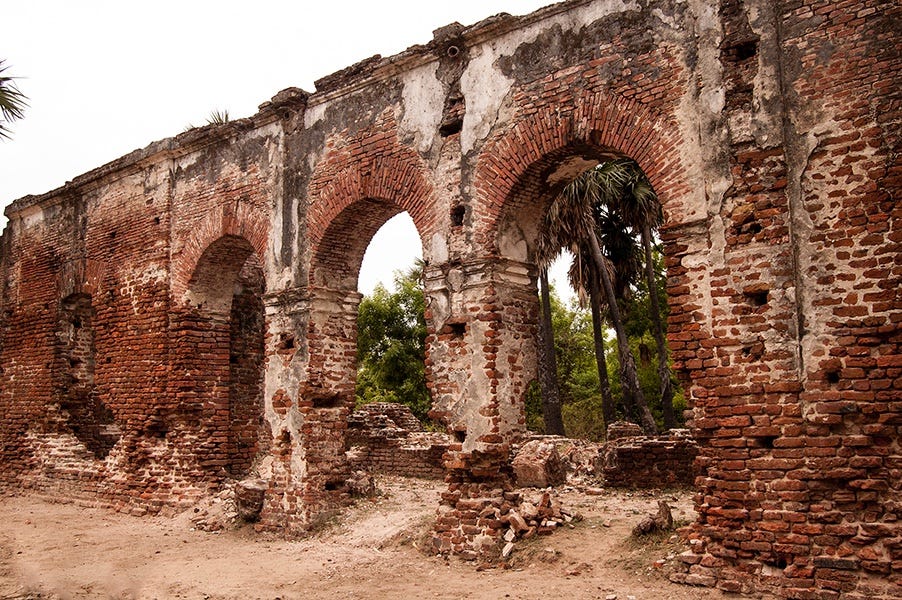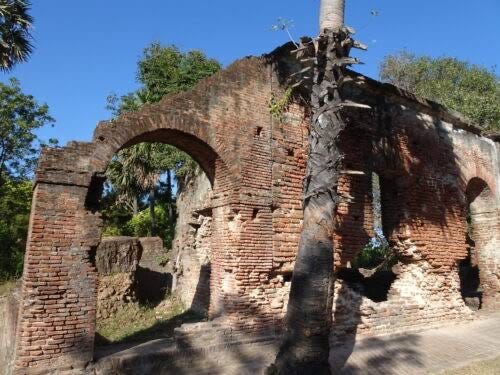Arikamedu: The Forgotten Indo-Roman Port
It was once a thriving center of global commerce, connecting India to the Mediterranean. Today, it’s a ruin barely anyone knows about. WTF happened? And why has this place been erased from history?
Nestled between Veerampattinam Beach and the Ariyankuppam River are the remnants of an ancient port city once known as Podouke, mentioned in the 1st-century Periplus of the Erythraean Sea.
Over centuries, this trade hub evolved into what we now call Arikamedu, meaning “Mound of Arakan,” referring to a Jain Tirthankara Mahavira figurine found there.
It’s also linked to Virampattinam, meaning “Port of Virai.”
Virampattinam was a neighbouring village known in Sangam literature for its port & salt pans during the Velir dynasty.
Poduke is the Roman name for the site, possibly a corruption of the Tamil Potikai, meaning “meeting place,” also associated with the local Poduvar clan.
The site first caught European attention in the late 1700s when French astronomer Guillaume Le Gentil wrote about its towering walls, large tanks & river embankment.
But real archaeological interest didn’t kick off until 1941, when French archaeologist G. Jouveau-Dubreuil linked the site to Podouke & called it “a true Roman city.”
Early digs turned up fascinating artifacts—beads, gemstones & even an intaglio bead featuring Augustus’ head.
These finds sparked curiosity among local French residents, leading to a wave of amateur treasure hunting.
While their enthusiasm was great for collecting trinkets so as to show it off to their friends, it did little to piece together the past.
That changed in 1945, when Mortimer Wheeler took over as Director General of the Archaeological Survey of India (ASI) and led the first major excavation.
By the time he arrived, Arikamedu had already suffered from looting & disturbances caused by local rice & coconut farming.
Despite this, his excavation uncovered a massive warehouse built with bricks & lime mortar, stretching over 45 meters. He also classified three key types of pottery that became crucial for dating these sites:
> Arretine Ware – high-quality red-glazed pottery from the Mediterranean, found in fragments.
> Amphorae – tall, two-handled jars the Romans used to store wine & oil.
> Rouletted Ware – distinctive black or grey dishes with a decorated base, featuring a characteristic design.
Alongside these, Wheeler unearthed Roman glass beads, terracotta figurines, and coins, reinforcing Arikamedu’s role as a major trade link.
He divided the site into two zones: the northern part, believed to be the harbour, and the southern, an industrial settlement.
Ceramic cookware in the northern sector hints at mass feeding of sailors & traders. By the late 2nd century BCE, wine in amphorae was a major import from the West.
Buildings in the northern mound suggest urbanisation with a mix of Indian & non-Indian residents.
The site yielded a few idols, indicating ancient Tamils practiced Hinduism. H. D. Sankalia noted that Arikamedu was a rare find, even uncovering a Brahma statue—something not seen in northern India. Other Hindu deity idols were also discovered.
Wheeler also dug up some Chinese celadon from the Song-Yuan dynasty, along with Chola coins dating back to the eleventh century. But he just dismissed them as either junk left behind by looters or stuff that just didn’t belong.
Wheeler’s conclusion? Arikamedu was a Greek (Yavana) trading post that traded with Rome, starting during the reign of Augustus Caesar, & that it flourished for about 300 years, from 100 BCE to 200 CE.
But archaeology’s never that simple. Later digs would go on to prove him wrong.
French archaeologist Jean-Marie Casal followed up with excavations from 1947 to 1950, pushing back the site’s timeline.
He found connections between Arikamedu & Megalithic burials in Suthukeny, along with evidence of continuous occupation into the medieval Chola period.
His discoveries included Black and Red Ware linked to the Iron Age, textile dyeing tanks, pozzolana cement, and sigillata pottery.
Then, after a long hiatus, archaeologist Vimala Begley re-excavated the site between 1989 and 1992.
This pushed the settlement’s origins even further back to around 300 BCE & suggested it remained occupied well into medieval times. There was even evidence of reoccupation in the 1800s.
Conclusion? Arikamedu wasn’t any fleeting port. It had a lifespan stretching over millennia.
In 2004, the Pondicherry Administration & the Italian Embassy proposed a plan to conserve Arikamedu, recognizing its importance in Indo-Roman history.
The idea? Get it listed as a UNESCO World Heritage Site under the Silk Route Sites in India project.
The ASI took the lead, acquiring swathes of land and drafting a master plan. The vision included fresh excavations, conservation of trenches, and a site museum.
That was 20 years ago. Nothing has happened since then. Quite literally. Nothing.
Today, Arikamedu isn’t even on Puducherry’s tourism radar. The drive to the site is just a few miles, but once you turn onto Arikamedu Road, you’re on your own.
No signs, no directions—just a narrow, dusty path winding through trees.
Eventually, you’ll spot a single ASI sign marking the site’s protected status. That’s it.
Near the sign, the crumbling remains of Arikamedu sit in silence, forgotten by almost everyone except the archaeologists who tried to save it.
That's a wrap! If you enjoyed this article:
1. Follow me @CultChron for more of these informative threads.
2. Share the article to spread the word.
3. Be sure to check out our other socials (X, YouTube etc).
Until then, goodbye!

